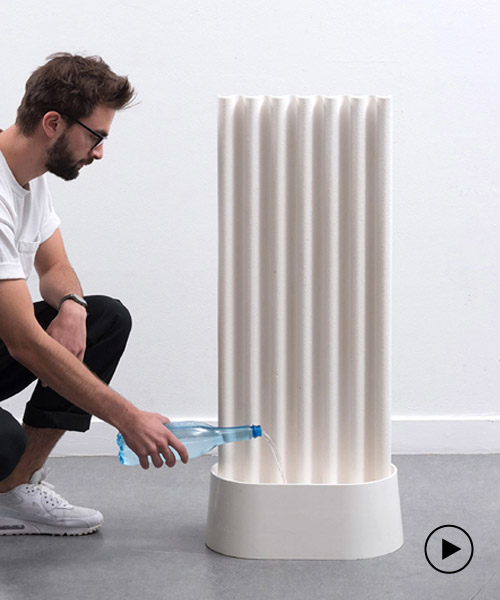through two new products, industrial designer maxime louis-courcier explores materials to propose a sustainable approach to household appliances. the project, which consists of the woven air-conditioner and the paper clay air humidifier, forgoes the use of electricity to provide functional objects designed for the home environment.
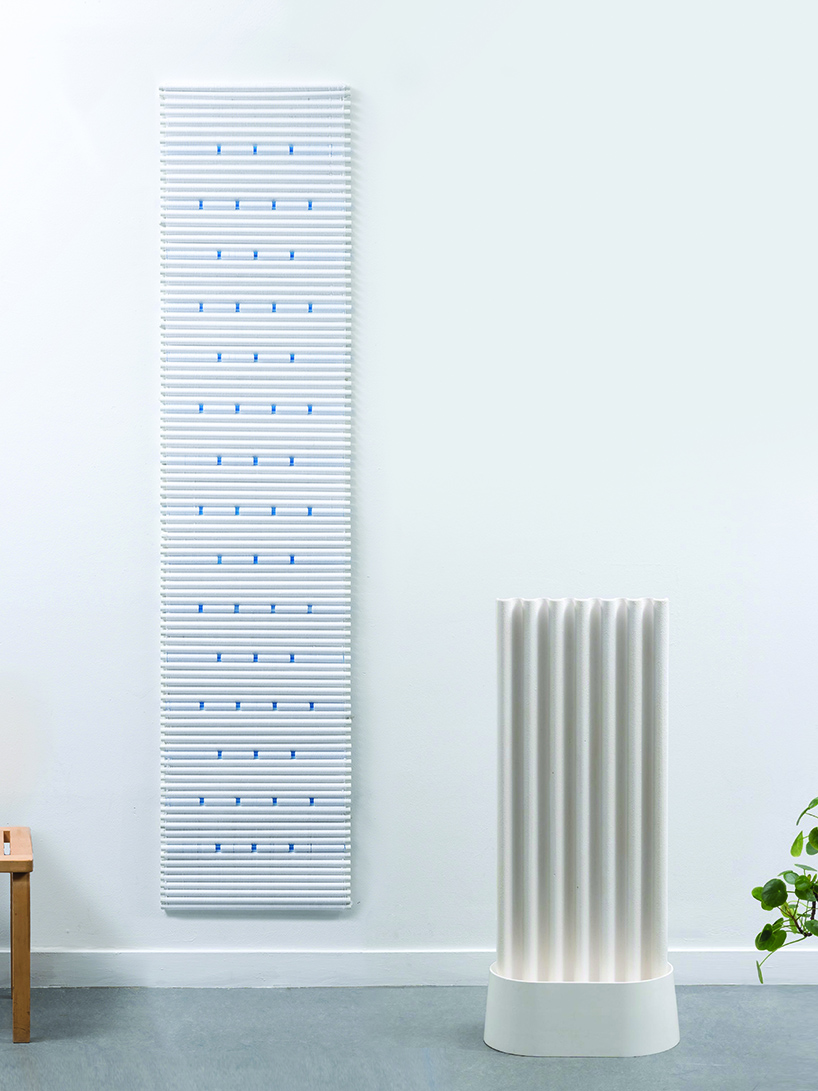
the woven air-conditioner and the paper clay air humidifier
all images and videos courtesy of maxime louis-courcier
used during the summer, the woven air-conditioner by courcier is a low-tech version of an electric air-cooling system. as a tapestry, it’s as decorative as functional. its design highlights the use of phase change materials (PCM). they are bio-based fatty acids, that melt at a certain temperature and absorb heat while they’re melting. with its tubes filled of PCM, the object absorbs the heat in contact with the air and also creates a barrier to the heat that comes from outside through the walls.
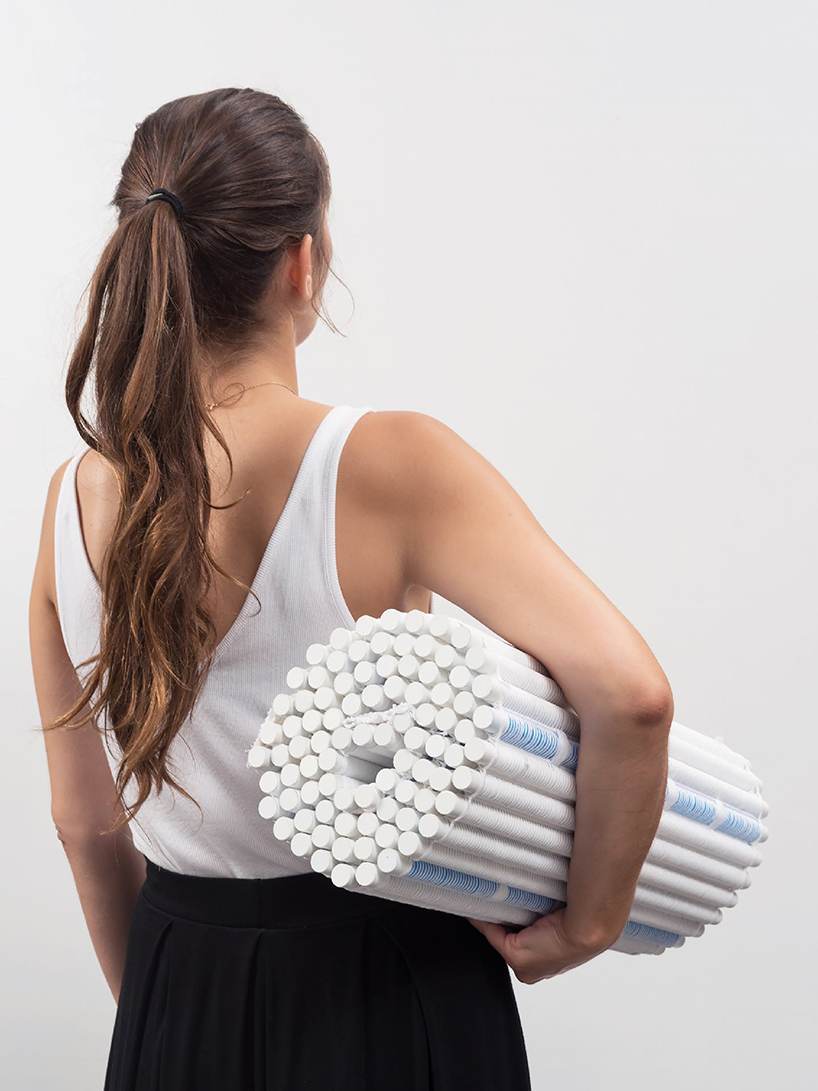
a module rolls out which makes it easy to install
when the phase change temperature is reached, here, 25 degrees (depending the region, different melting temperatures are possible), the PCM melts and becomes transparent. it makes the back of the tube visible which is blue. a blue pattern gradually reveals during the day without being too present on the wall. it makes visible the natural absorption cycle of the PCM and indicates the general state of the material inside the tubes as the object reduces the air temperature. as it is a cycle, at night when the temperature drops, the material solidifies and is ready to be active again.
the paper clay air-humidifier is a sustainable appliance designed for the home environment, used when the air is dry because of the climate or overheating in the winter. its main part is a paper-earthenware extruded surface. it gradually absorbs the water contained in the base, which evaporates through its pores and moistens the room without creating a cold air stream.
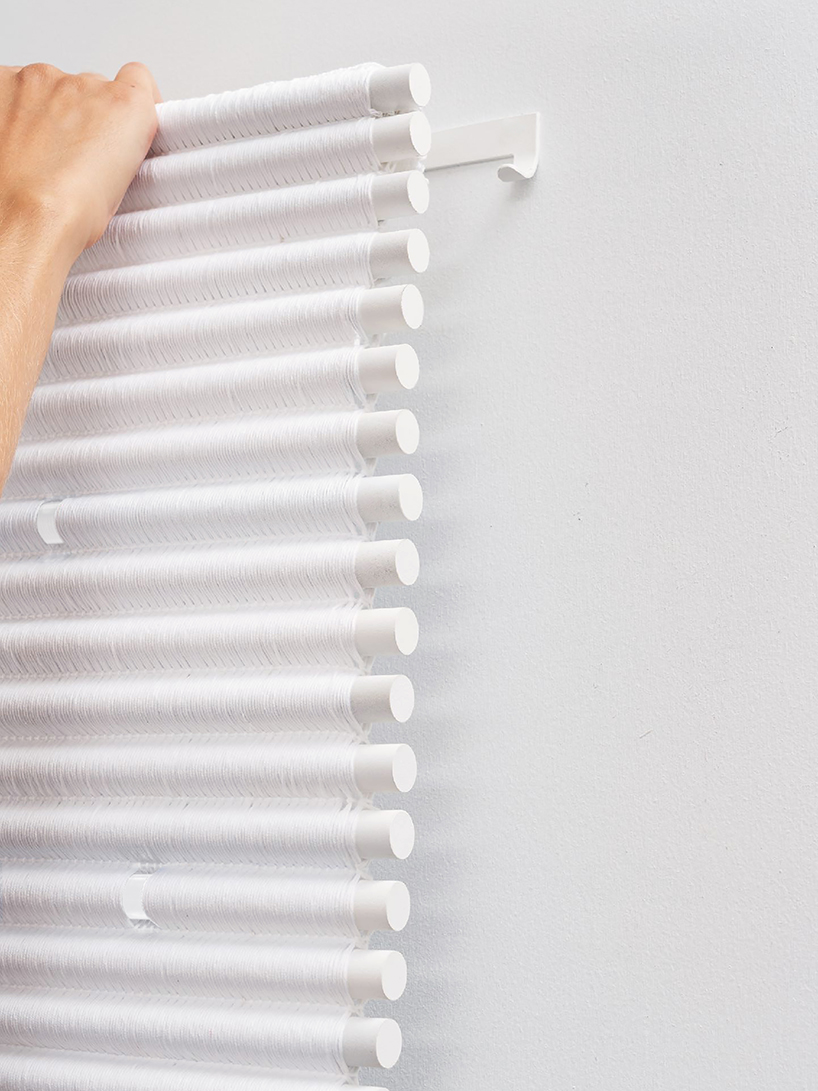
tubes are woven with a high thermal conductivity composite yarn
to work, it simply uses the physics principles of capillary action and evaporation of water, which are much more efficient with the use of a composite paper earthenware that has been designed for the object. the design of the surface, its ripples, increase the surface area and are sized to humidify a large room ( 25m2) with around 200g of water per hour. the design also refers to an imaginary of diffusion and gives it a decorative status. it’s not an object made to be hidden but to be shown, as the white colour allows it to blend into the domestic environment.
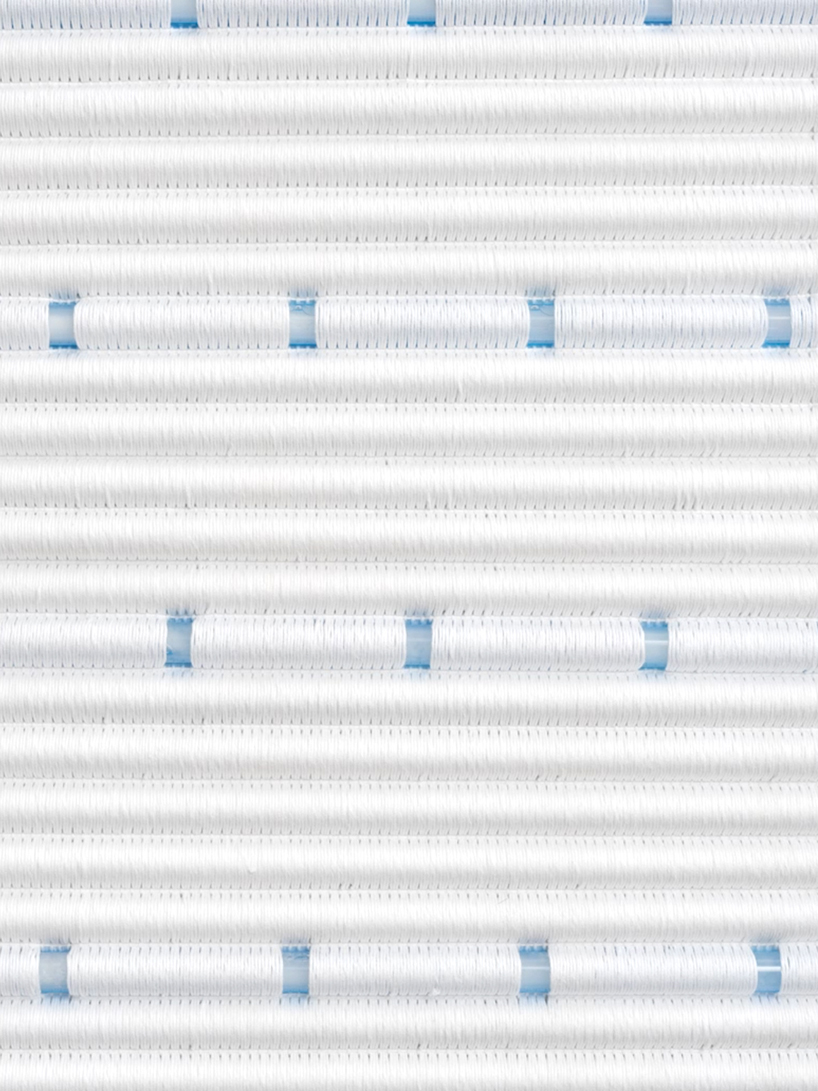
as it absorbs heat the PCM becomes transparent
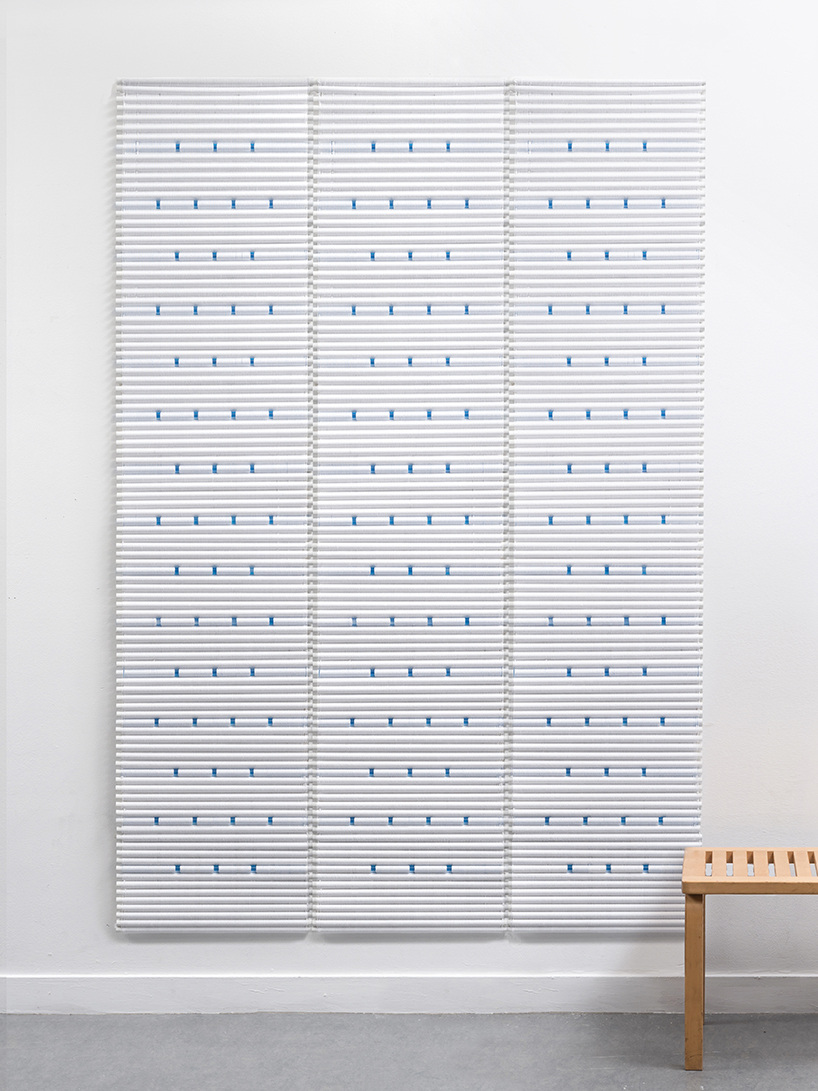
here three modules are aligned to cool a bedroom
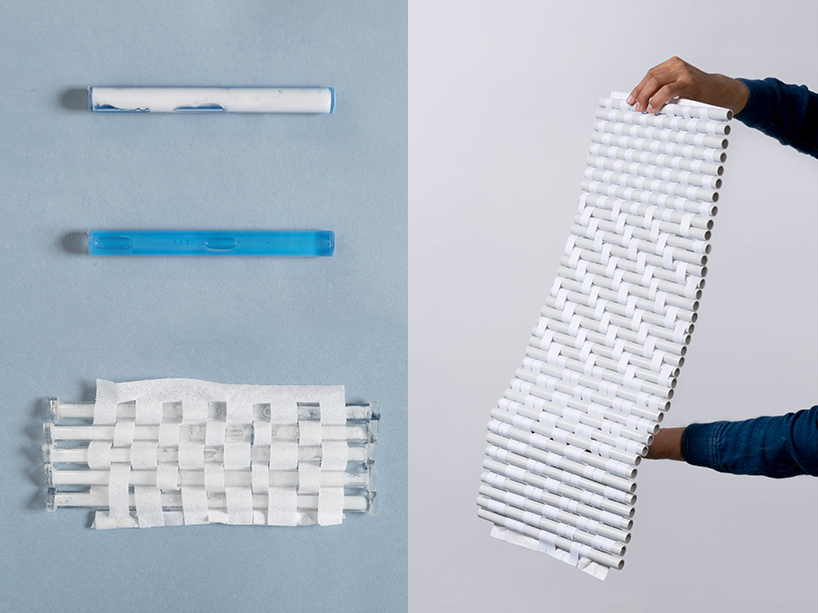
weaving experiments
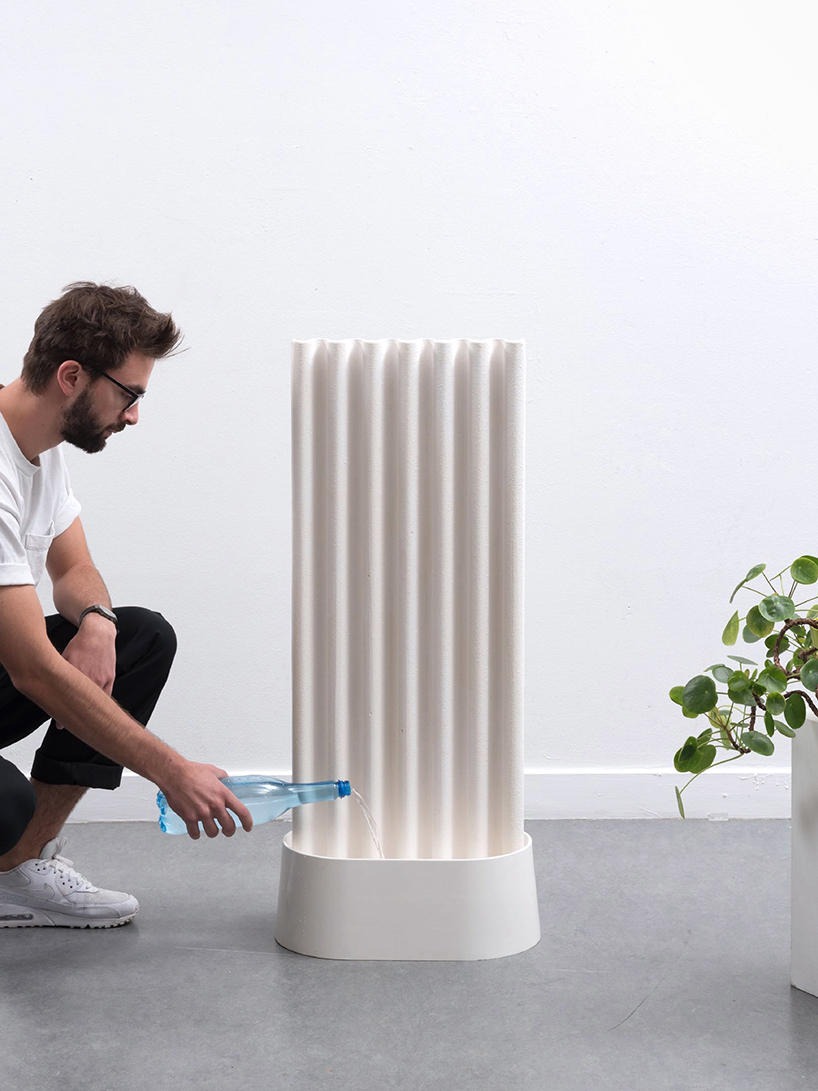
the base receives water and gives stability to the object
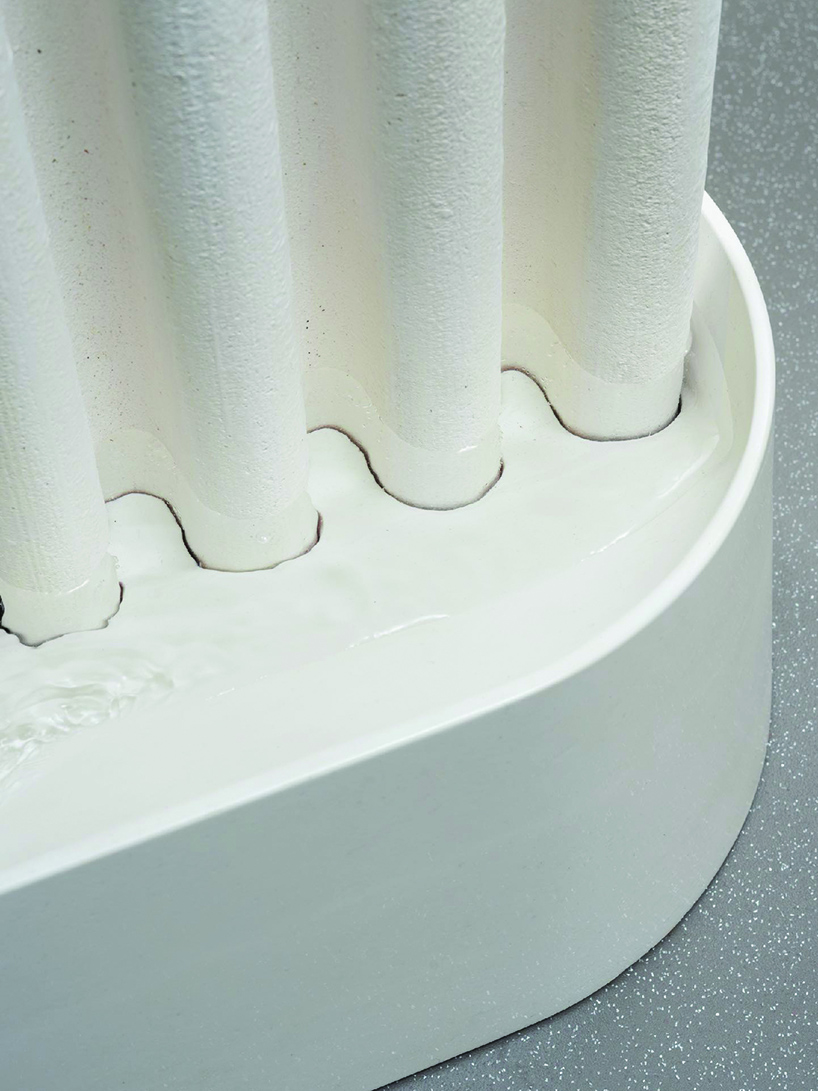
the slope allows to see the level of water
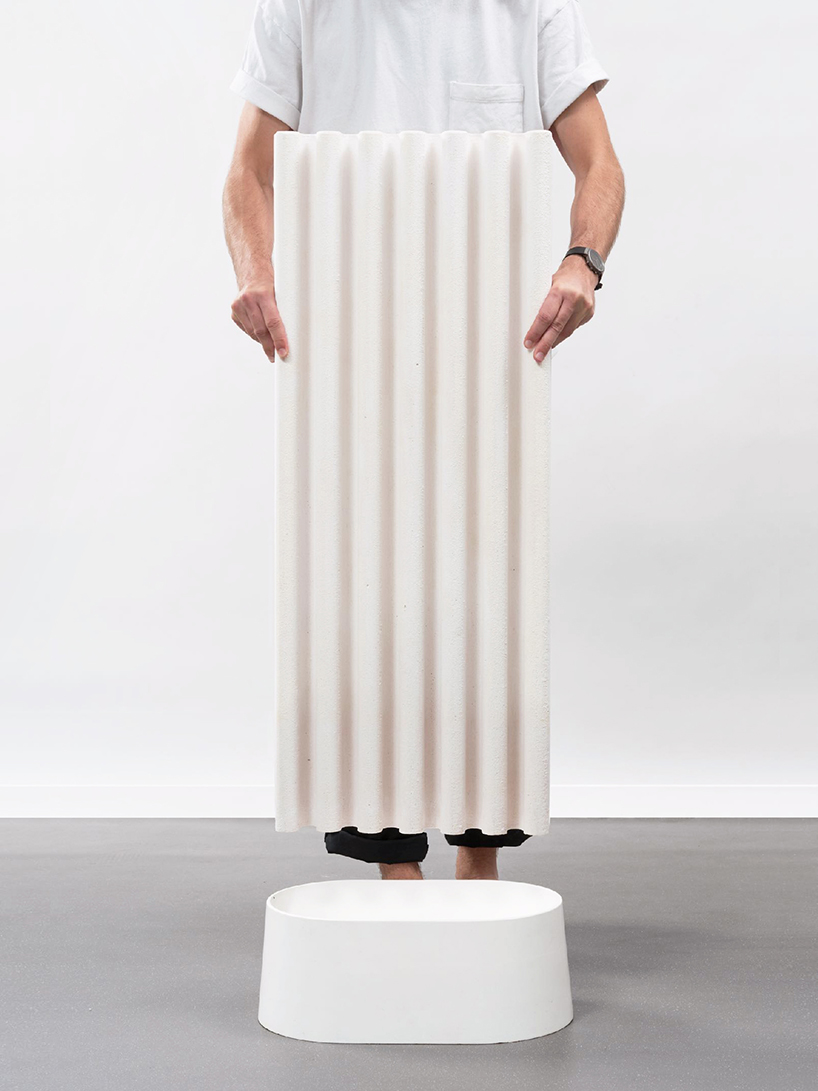
the withe surface filters and hides limescale
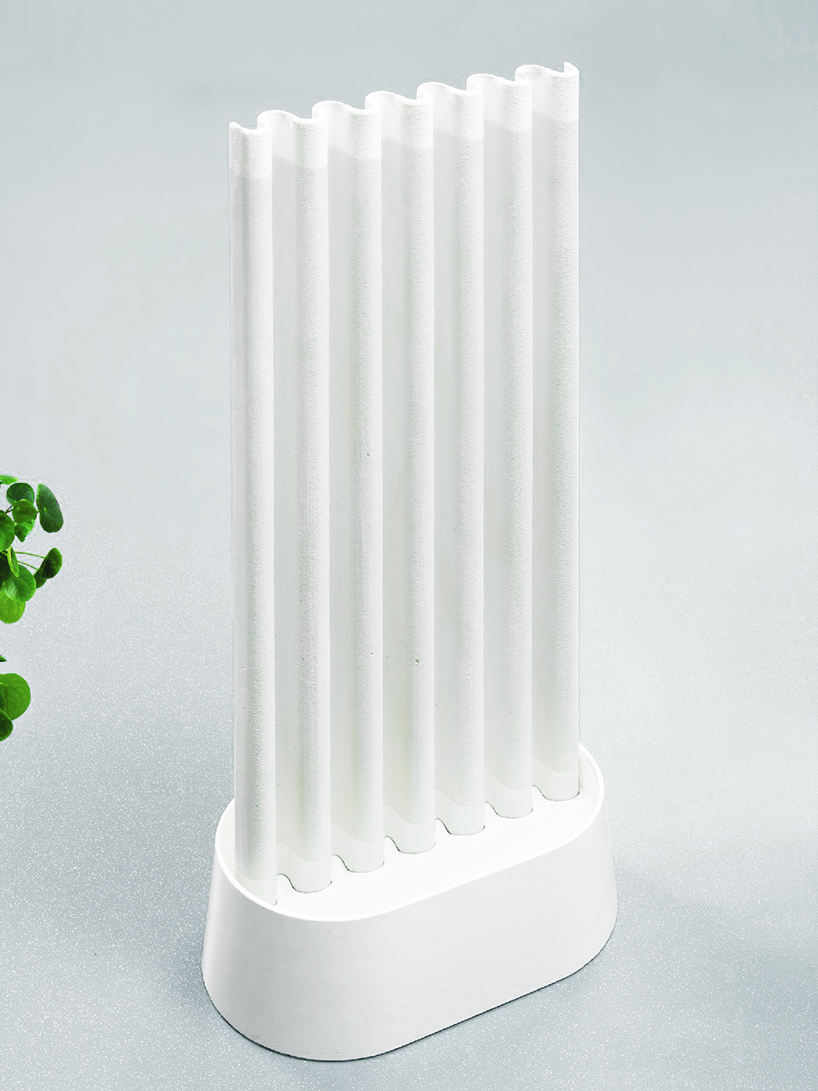
the humidifier is getting fully efficient as the water rises to the surface
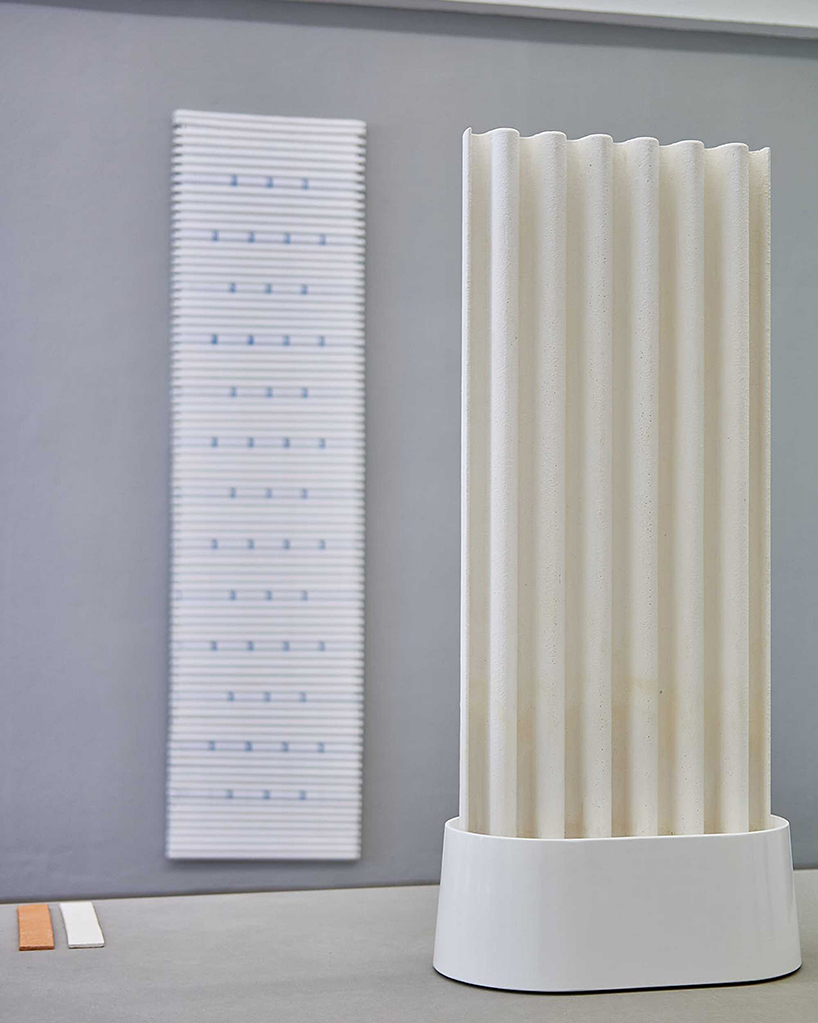
the projects at villa noailles in 2019
project info:
project name: the woven air-conditioner and the paper clay air humidifier
design: maxime louis-courcier
designboom has received this project from our ‘DIY submissions‘ feature, where we welcome our readers to submit their own work for publication. see more project submissions from our readers here.
edited by: lynne myers | designboom
